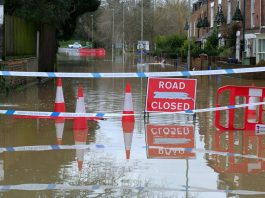Securing the world’s water supply is rapidly becoming one of the most critical challenges of our time.
Recent research conducted at Stockholm University has unveiled a new approach to quantifying the global risk of water scarcity, revealing that the situation may be far more precarious than previously thought.
This study introduces a novel perspective that considers the environmental conditions and governance of the regions where rain is produced, offering a deeper understanding of the risks to global water security.
Rethinking the global water supply
Traditionally, the assessment of global water supply has focused on rainfall that accumulates on the Earth’s surface, replenishing aquifers, lakes, and rivers.
This conventional approach has informed water security assessments and predictions of water scarcity. However, the new study suggests that this view might be too narrow.
Fernando Jaramillo, an associate professor in physical geography at Stockholm University and one of the leading researchers of the study, points out that water supply does not merely start with the rain falling on the ground.
Instead, it begins much earlier with moisture that evaporates from land or ocean surfaces, travelling through the atmosphere before eventually falling as rain.
This ‘upwind’ moisture source has often been overlooked in traditional water availability assessments, yet it plays a crucial role in understanding global water scarcity risks.
The importance of the precipitationshed
Jaramillo’s research emphasises the importance of also considering an upwind perspective—specifically, the areas where evaporated water is transported before it precipitates as rain.
These areas, known as ‘precipitationsheds,’ can span vast portions of the Earth’s surface and are critical to understanding the full picture of water availability.
An illustrative example of this interdependence can be found in tropical South America. The Amazon basin, which lies downstream of the Andes mountain range, is highly dependent on the moisture evaporated from the Amazon rainforest itself.
In turn, large portions of the Andes rely on this moisture, highlighting a complex relationship between these regions that directly affects their water supply.
Increased risks and the role of governance
The study analysed 379 hydrological basins around the world and found that the risks to water security increase significantly when the upwind origins of water are considered.
José Posada, the study’s main author and former doctoral student at Stockholm University, noted that with this new approach, approximately 32,900 km³ of water requirements globally face very high risk—a nearly 50% increase compared to the traditional upstream-focused assessments.
This increase in risk underscores the critical role that political control and environmental management play in securing water supplies.
For example, land-use changes such as deforestation and agricultural expansion in upwind areas can drastically reduce the amount of moisture vegetation provides, leading to decreased rainfall and heightened water scarcity downstream.
Countries like Niger, which rely heavily on moisture from neighbouring countries, are particularly vulnerable to these changes.
The findings of this study underscore the necessity of adopting an upwind perspective in water governance and international cooperation.
Environmental regulation in areas where moisture originates is crucial for maintaining water security in downwind regions. The study highlights the interconnectedness of water systems and the importance of cooperative management across borders.
Jaramillo added: “We hope that the findings of this study can help identify where and to whom cooperation strategies and efforts can be directed to mitigate the causes of water-related tensions, including atmospheric water flows in transboundary decision-making and water governance frameworks.
“We stress the need for international cooperation to effectively manage upwind moisture sources.”
This research advocates for an urgent reevaluation of global water governance frameworks to include upwind moisture sources, fostering collaboration among nations to mitigate the growing risks of water scarcity.









